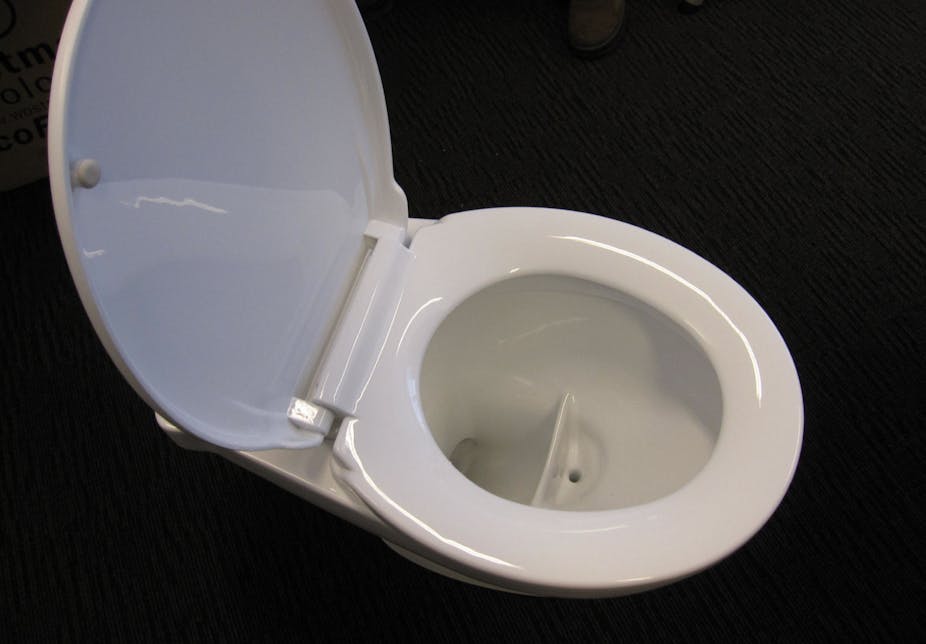Collecting and reusing urine to grow crops may raise some eyebrows. But as the negative consequences of modern day sanitation systems become more significant, so does the relevance of research and innovation in sustainable sanitation.
Modern day sanitation systems (in the form of piped-water and toilets) have well-deserved recognition as “the greatest medical advance in the last 150 years”, for their critical contribution to public health in cities. But they also waste and misplace valuable resources.
They require large quantities of (mostly drinking quality) flushing water. This particular concern has led to more water-efficient toilet designs and “recycled water” pipe networks - but this is only the tip of the iceberg. Concerns about the looming scarcities of essential agricultural nutrients such as phosphorus are on the rise, even as our sewers carry phosphorus and other nutrients from the food we eat and discharge them to aquatic ecosystems where they can cause eutrophication and algal blooms.
In addition, the increasing consumption of pharmaceuticals and personal care products accompanying our rising affluence has led to the presence of these endocrine-disrupting substances in our wastewater, and as micro pollutants that persist in our waterways. Processes to remove these substances from wastewater are very costly. And although nutrient removal is provided at our inland sewage treatment plants discharging to rivers, it is seldom provided at our coastal plants.

Pee harvesting
Innovation towards more sustainable sanitation systems that demand less resources, enable nutrient reuse and protect aquatic ecosystems are therefore urgently needed. Although ecological forms of sanitation that use little or no water and return all nutrients back to the soil would top a theoretical list, the new cultural attitudes and personal and logistical practices they require would be too great to be feasible for our cities today.
Urine diversion (UD) is however worth exploring. Urine contains the majority of nutrients as well as the pharmaceutical residues we excrete, and contributes a very significant proportion of these substances to the wastewater stream (typically around 80% of the nitrogen, 50% of the phosphorus and 90% of the potassium).
Thermodynamically, diverting nutrient-rich urine at the toilet and collecting it for treatment and reuse while keeping it out of the wastewater stream makes greater sense than mixing urine nutrients with everything else and then removing them at a sewage treatment plant. While micro pollutants remain a complex problem, indications are that they persist much longer in aquatic environments while more likely to be broken down by soil organisms.
Managing the change
The award winning project led by UTS’ Institute for Sustainable Futures recognised that transitioning from current systems to more sustainable sanitation systems is more than a matter of technology. It requires new cultural attitudes and practices as well as regulations, institutions and markets. The research project sought to take a first step in exploring some of these issues taking multiple disciplinary perspectives.
It brought together a large cross-disciplinary team of collaborators including academics from three universities representing design, built environment, engineering, law and agriculture. Key industry partners Sydney Water, bathroom products manufacturer GWA Group (Caroma), and Nursery and Gardens Industry Australia were involved. Government partners from NSW Health, plumbing regulators and City of Sydney, as well as practice-based partners AKA the Plumber, and UTS’ Facilities Management Unit also took part in the project.
The study involved researching the technology, regulatory and social aspects of urine diversion. Two models of Swedish UD toilets were trialed on the 11th floor offices of the Institute for Sustainable Futures. This was primarily to test the user experience and installation issues around the toilets, which do require some behaviour change.
Waterless urinals were trialed in a ground floor male toilet block with plumbing connection to a urine collection tank, to test issues around collection and overflow to sewer. A small agricultural pot trial was also carried out to test the efficacy of urine on a range of plants. There was a dedicated research strand for using visual communications to engage with users, involving students who created a suite of resources such as information posters, logos and multimedia resources (see video at http://vimeo.com/13365354).
The research concluded that waterless urinals represent a mature and feasible UD technology, but the present models of UD toilets are not yet ready for public spaces. There is need for targeted training for plumbers and installers, since some departure from code-compliant plumbing arrangements are required.

The plan for now
There is a long way to go before urine diversion becomes feasible at scale, so large building owners should not be rushing out to start collecting urine right away. However, when new buildings are being constructed, the urine pipework can be added at a minuscule additional cost (relative to the cost of the building) in anticipation of the time in the future when urine diversion is feasible, and necessary as resource scarcity really bites.
With just this view, the new Engineering and IT building under construction at UTS will have urine pipework installed. And designers of the premier Barangaroo development in Sydney are committed to doing the same to “future-proof” their commercial buildings.
The authors’ project trialing “urine diversion” systems in urban Sydney recently won a Green Globe award for Excellence in Leadership and Innovation from the NSW government.

